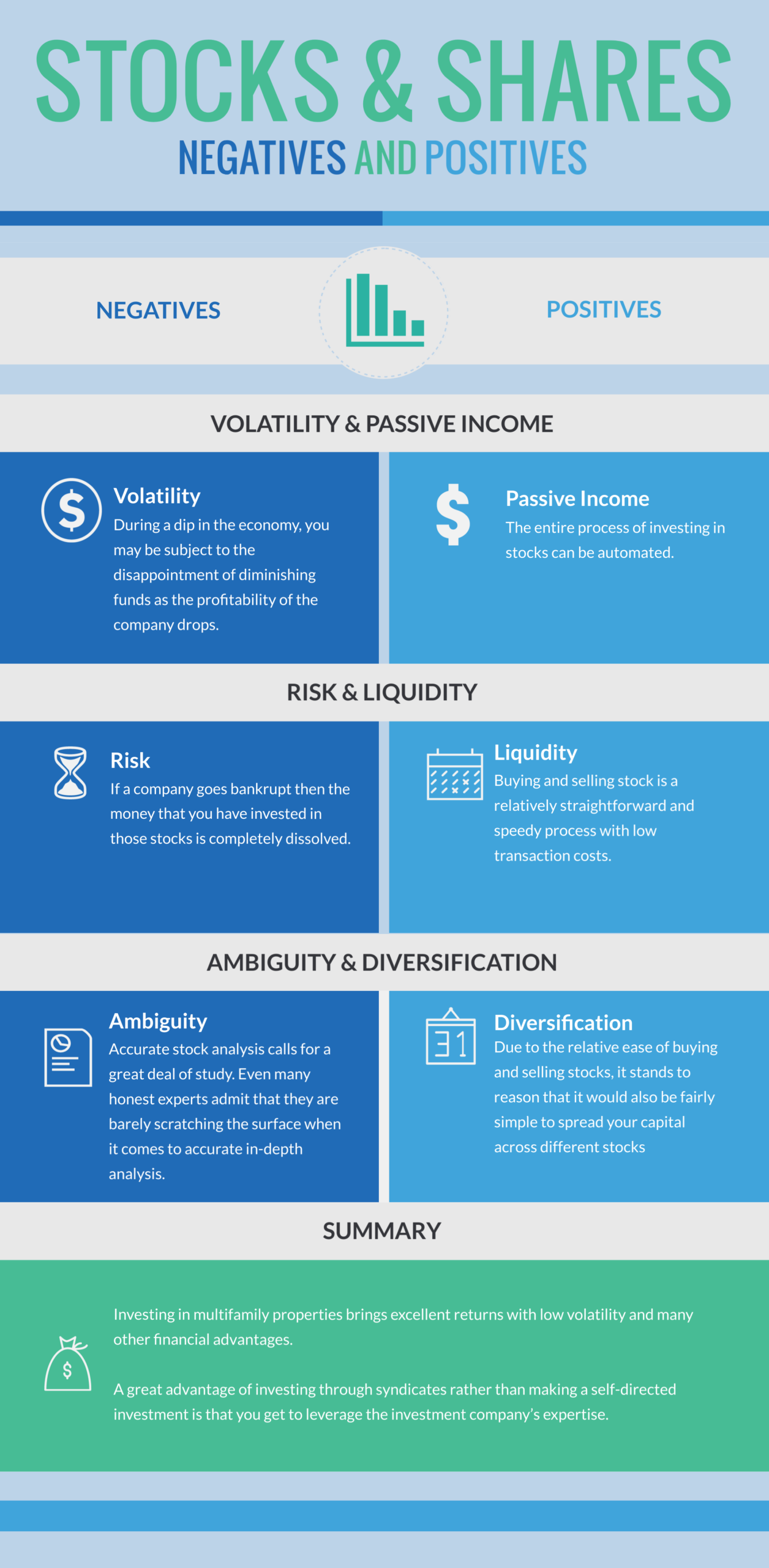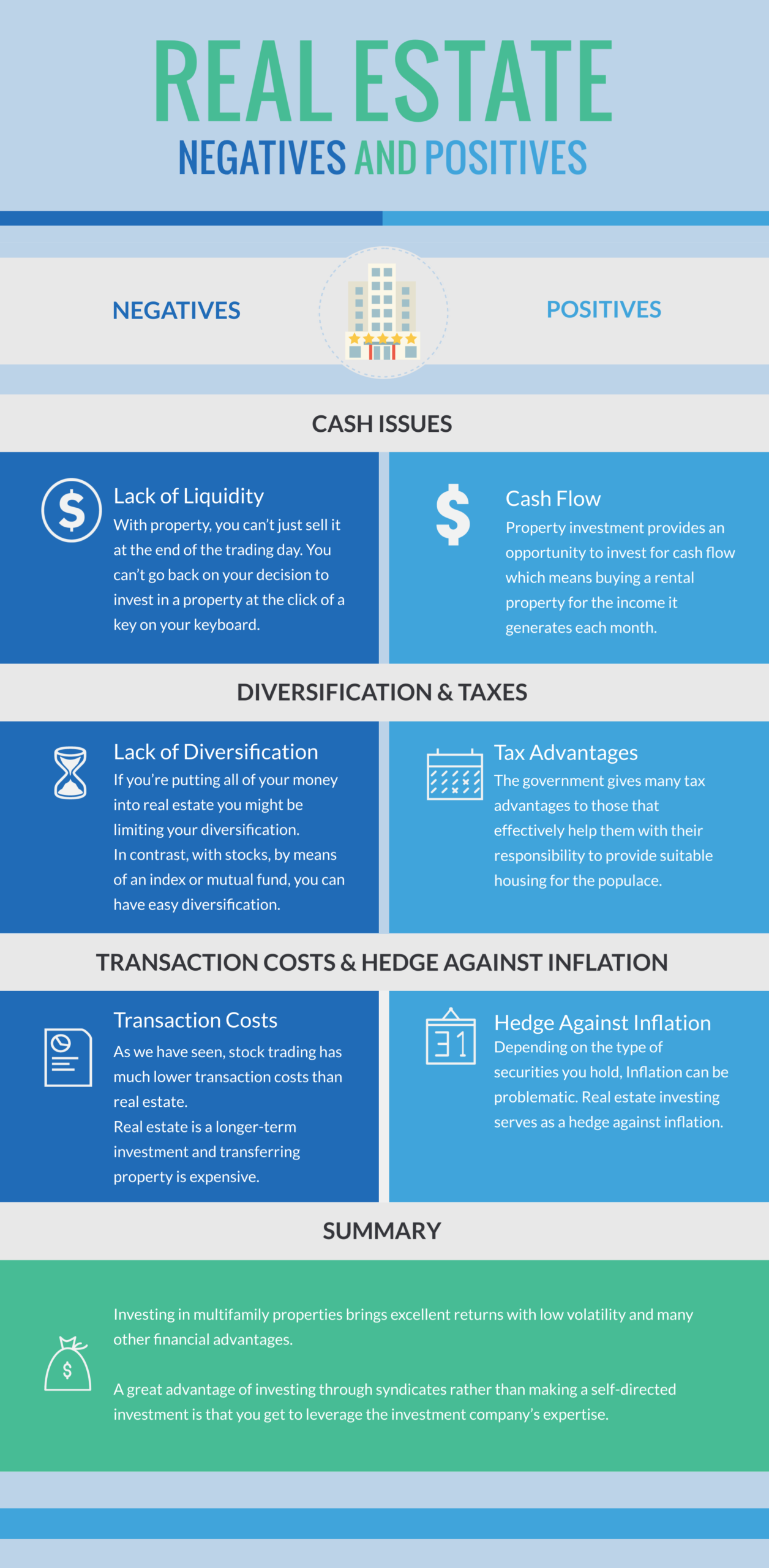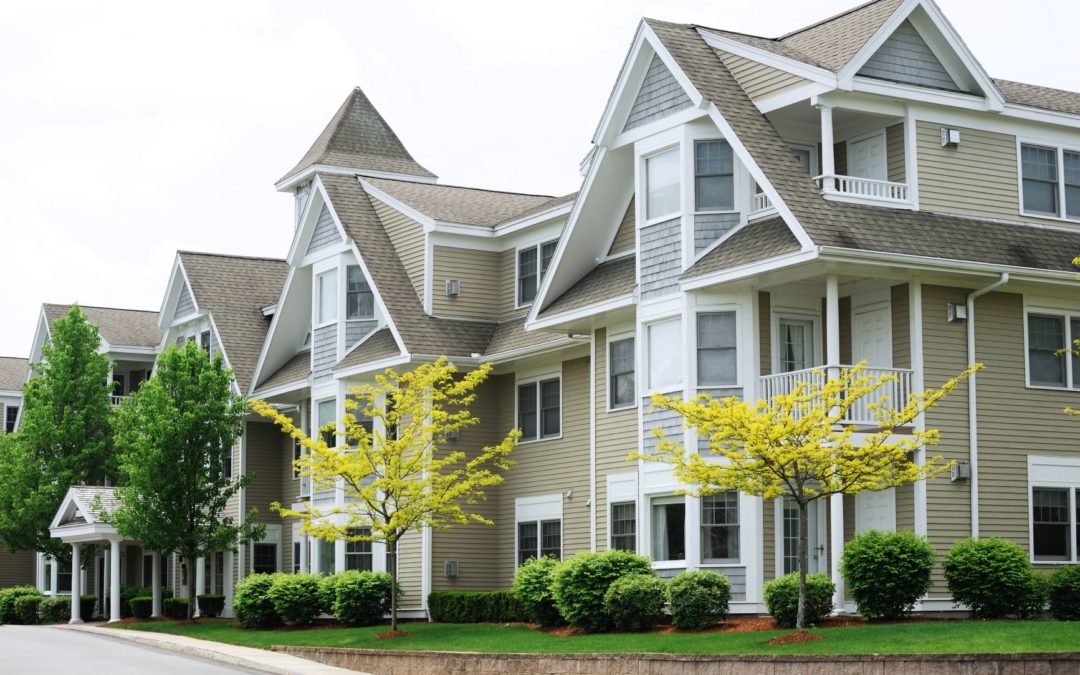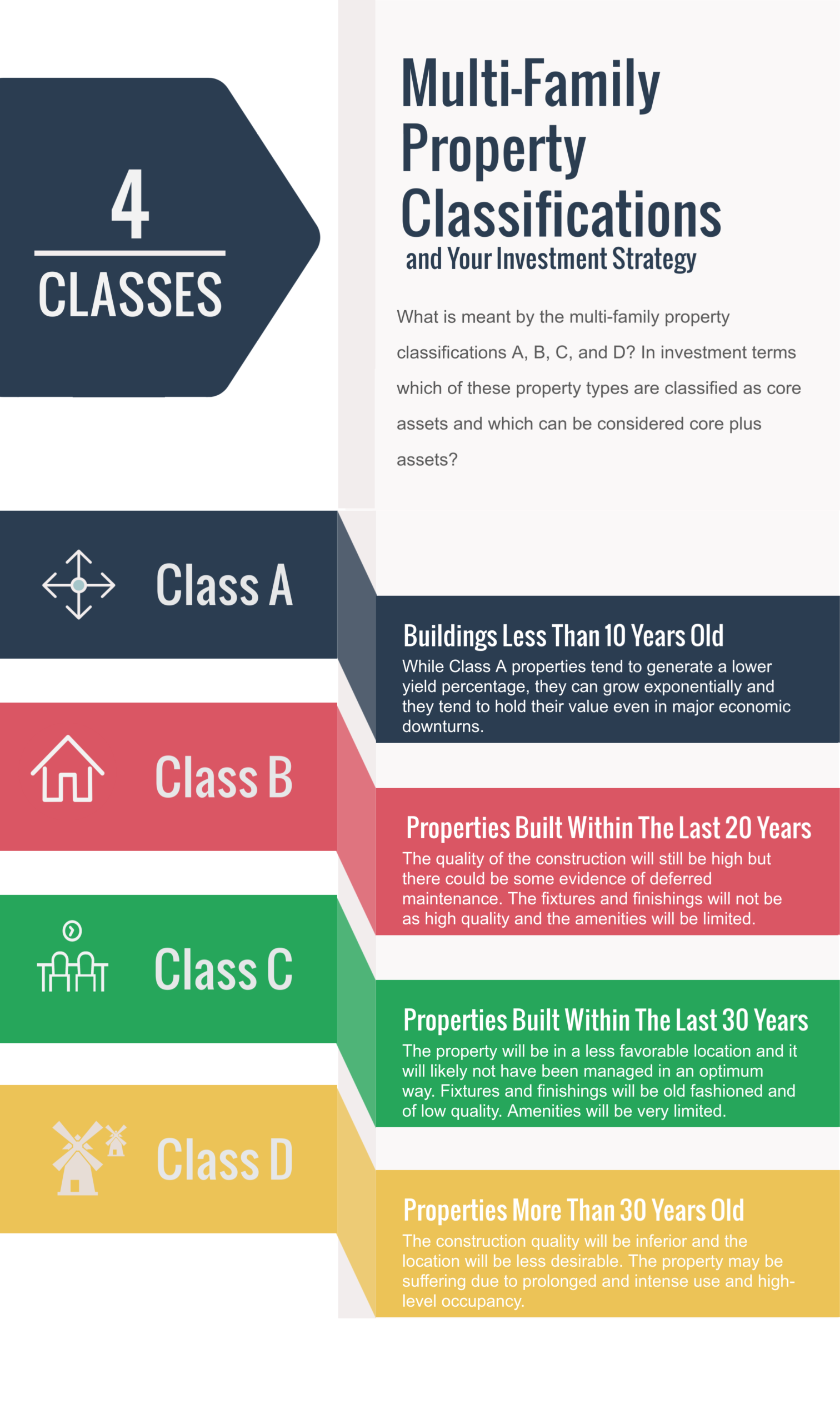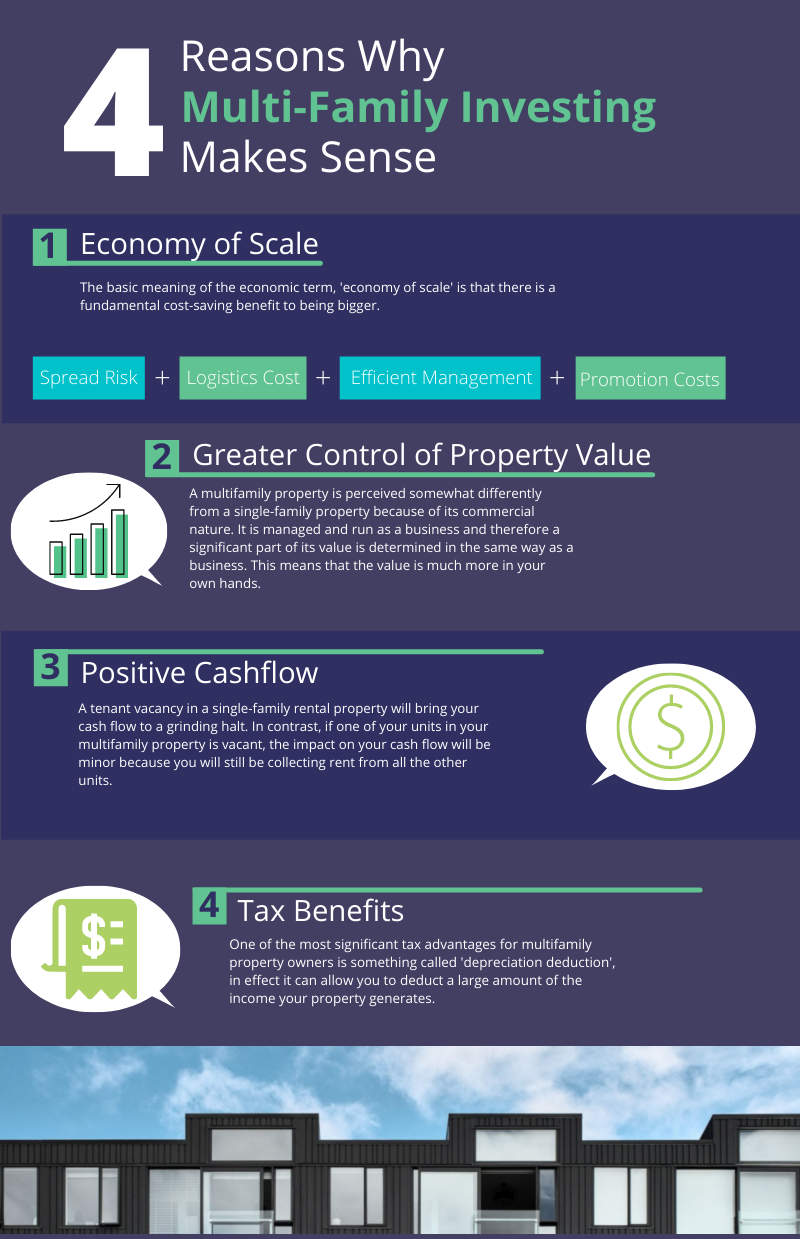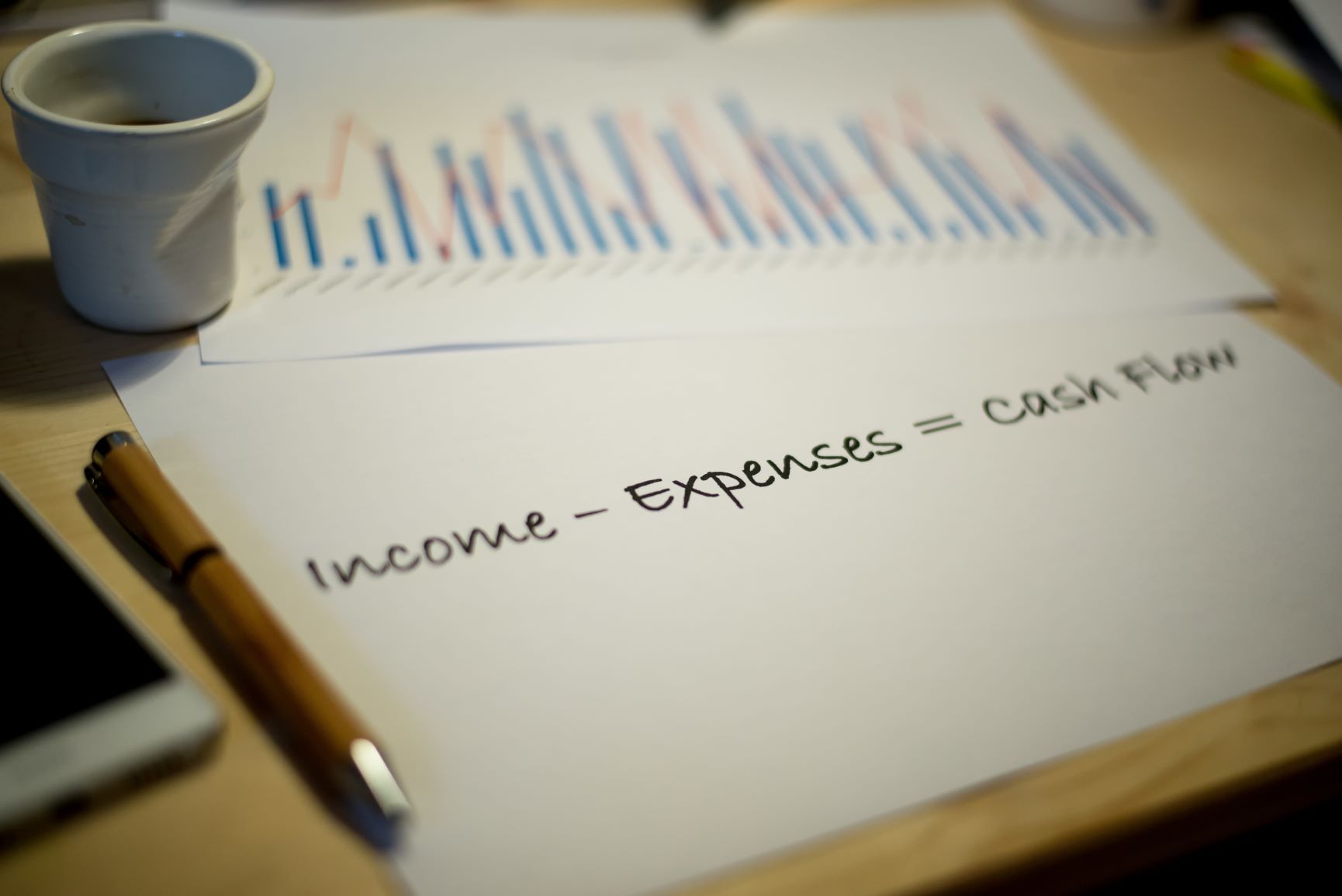
While many people tend to dread tax season each year, those who are proactive with multifamily real estate investing (specifically real estate syndications) are likely excited about it. That is because there are tons of multifamily syndication tax benefits and incentives that arise for passive investors that enable them to gain max profits from this dynamic stream.
In short, investing in multifamily syndications offers much more than a lucrative passive income stream; it is also one of the most tax-favoured investing avenues.
Before we dive into these benefits, here’s a quick disclaimer. Since we’re not tax professionals, the information in this article is from our experience and understanding only. You should speak to a qualified CPA for details and advice about your specific situation. This article should not be construed as tax advice.
Below are the leading multifamily syndication tax benefits that every investor should be knowledgeable of so they can be fully prepared to capitalize on their opportunities.
Depreciation
Depreciation is a huge tax deduction and is often overlooked. In tax terms, depreciation is an accounting method that calculates the cost of tangible business assets’ declined value over time and allows the owner to write it off. The most common form is called straight-line depreciation, which is a system that takes the annual deduction cost of items and divides it by its useful life. As for real estate, the IRS states that the useful life of residential properties is 27.5 years, and 39 years for commercial.
For example, if you have a property valued at $1 million. You can divide that by 27.5 years, which comes out to about $36K. That means that you can deduct $36K in depreciation each year for up to 27.5 years. The reason this is such a significant deal is because, hypothetically, let’s say you make about $10K profit in a year on your invested property. In such a case, you do not have to pay taxes on that $10K and you get to keep it completely tax-free. On paper it may look like you lost $26K, but in reality, you earned $10K.
Cost Segregation and Bonus Depreciation
Cost segregation is very similar to depreciation but accelerated. Cost segregation takes into account that some parts of the property depreciate much faster than 27.5 years. For example, flooring such as carpet has a much shorter life span.
You can have an engineer do a cost-segregation study where they evaluate the individual elements of a property and calculate the life span. This can allow you to depreciate many items over a much shorter time frame, for example, 5-15 years.
What’s the benefit of taking the depreciation deduction at a must faster rate?
You see, the hold time for most multifamily real estate syndications is about 5 years. That means that you may only get 5 years of those depreciation benefits listed above (5 out of 27.5 years), meaning you’d miss out on over 22 years of depreciation benefits.
So, if you have something that depreciates in 5 years instead of 27.5 years, and you only hold that property for 5 years, you may end up deducting the full depreciation amount for that part of the property. By being able to take a larger depreciation deduction earlier, you get more of the depreciation benefits and make a higher profit.
When a property is sold, capital gains tax is owed, and in some cases, deprecation recapture.
Another depreciation option, which is a result of new tax bills, is “bonus depreciation”, which gives the option to depreciate the entire value of a property in the first year. This way you can carry forward losses until the property is sold, which can offset capital gains.
1031 Exchange Tax
If you do not want to embark on capital gains just yet, a 1031 exchange would be an ideal alternative. A 1031 exchange is what allows investors to sell one investment property, and in an allocated amount of time, swap it for another. Essentially, instead of having the gains be rolled out to you, you would have the ability to invest them in a new real estate syndication. That all equates to you not needing to owe any capital gains tax to the IRS when the first investment property is sold. Note that not every real estate syndication offers a 1031 exchange outlet, but it is something to be mindful of and ask about during your venture.
Refinance Cash-Outs
It is not uncommon for multifamily real estate investors to invest in a property for about 1-3 years and then refinance the property after the value has increased due to renovations and rent increases. Doing this does not come with any tax obligations because it is not a taxable event when you return part of the investor’s equity.
Other tax benefits
Rental income is not subject to social security tax or Medicare tax, so that is a benefit as well.
Summary – The Tax Code Favors Real Estate Investors
In summary, multifamily real estate syndications can be a great investment that optimizes tax breaks and has been a proven channel to grow and preserve wealth. With the various multifamily syndication tax benefits, combined with typically excellent returns, it is clear how investing in real estate syndications can add up to significant short and long-term gains.
All in all, for any investor looking to convert their hard-earned capital to passive income in one of the most tax-friendly ways, then multifamily real estate syndication is certainly a prime avenue to think about.

Apartment syndication has been a strong buzzword in society, especially since the JOBS Act passed back in 2012 that boosted real estate crowdfunding. All in all, apartment syndication is an inked transaction between a general partner/sponsor and a group of passive partner investors to adequately fund a property that holds high credibility to drive optimal financial gains. Now, as clear-cut as this process may seem on the surface for all parties involved, there is one leading and fully justified question that arises amongst potential passive investors – how do general partners make money from this deal?
In summary, the answer to this question is quite dynamic, as there are several ways general partners can (and do) make money from apartment syndication. To offer more insight and clarity within this area, below is a comprehensive overview of the diverse streams a general partner has that allows them to get compensated for their role.
1. Distributions
First are distributions, which is an umbrella term that consists of operations, refinancing, and the sale of the property. Depending on the written contract and how much everyone invested will determine what the split and payout will be. For instance, the profit split could be a clean 50/50 between a passive partner and the general partner, or it could be as tilted as 90/10. As long as everyone agrees, the profits can be split equally, or each person could obtain a different return based on the X/X ratio listed.
Example: If a passive partner with an 8% preferred return invested $2,000,000 into a property that earned an annual cash flow of $200,000, they would receive $160,000 along with an additional $20,000 if the contract was a 50/50 split. That scenario would leave the general partner with $20,000 to take.
2. Percentage Ownership
Another primary way, which is also linked to the distribution point above, is making money through percentage ownership. Again, depending on how much personal investment the general partner chose to invest and how much the property refinanced or sold for will determine the outcome of this profit. An example for this one is the general partner owning 30% of the property and the passive partners owning 70% of it. The only underlying issue with this one is that it does not usually offer steady cash flow over time, but it could deliver large lump sums in the end if the value of the property rose significantly.
3. Fees
Next involves general partner fees. In short, there are typically a few different fees involved in an apartment syndication agreement, one of which is an acquisition fee. Almost all general partners will charge this one-time upfront fee, usually around 1-5% of the total purchase price. This profit will again be strongly determined on the potential of the property, the qualifications of the team, and the scope of the project as a whole. Why do you, as a passive partner, need to pay this? Because it covers the time and money spent by the general partner on their efforts involving deal development, team building, marketing analysis work, finance securing, and other aspects involved to make the project a successful and seamless one. Other fees that a passive partner can expect to pay and how general partners get paid for their time include:
- Asset Management Fee: An annual per unit fee ranging from about 2-3% and is used to cover aspects within the business plan such as interior/exterior renovations. An important thing to note here is that this percentage is based on what the collected income is, meaning the lower the income, the lower the percentage will be.
- Organization Fee: The majority of the time, most apartment syndication contracts do not list an organization fee as it is built into the acquisition fee. However, if it is separate, then a general partner will likely ask for a 3-10% upfront fee based on the total money that has been raised to organize and orchestrate the project team fundamentals.
- Refinance Fee: A refinance fee goes to a general partner for their time involved in refinancing a property. Perhaps the value increases as time goes on, and they are able to refinance with a better interest rate and terms. Refinancing is not always applicable, but if it is, there may be a 1-3% fee collected based on the total loan amount.
- Loan Guarantor Fee: This is another one-time closing fee (that a general partner may or may not ask for) which is collected to guarantee the loan. This one had a larger percentage range falling anywhere from .5% to 5%, depending on the risk involved and if it is a recourse loan or not. Diving deeper into the risks, a recourse loan is red on the risk chart because it allows the lender to collect the general partner’s assets (home, car, credit cards, etc.) even after the collateral has been taken to collect the debt owed. On the other hand, a nonrecourse does not allow the lender to collect assets other than the collateral. In those circumstances, the loan guarantor fee will be lower since there is less risk on the general partner.
- Loan Interest Fees: Regardless of the size of the loan being taken on to carry out the property renovating objectives, there is going to be interest involved. Because of this, there might be an 8-12% loan interest fee as part of the apartment syndication deal. This fee is to help cover that said interest incurred from the loans made to the company.
- Construction Management Fee: Lastly, a construction management fee is typically an on-going 5-10% fee to support the general partner in optimizing the project pipeline efforts. This percentage is calculated on the total renovation budget, but keep in mind that it is often intertwined with the asset management fee to maximize passive partner returns.
4. Brokerage Commissions (If Licensed A Broker in The Same State as The Property)
If a general partner happens to be a licensed real estate broker in the same state as the property they are investing in, then they could earn compensation for that area of business as well for performing brokerage activities to the syndication. For instance, they may earn a commission for purchasing the property initially and potentially a resale commission if selling the flipped property is part of the big picture agenda. As a final comment here, if a general partner is not a licensed broker, then onboarding one will be part of their team building process, as they are the main link between the buyer and seller and helps ensure that the entire acquisition process will go smoothly.
Conclusion – Ready to Invest Passively?
From finding and underwriting deals, securing finances, negotiating, executing business plans to investor communications, general partners are essentially the drivers when it comes to apartment syndication. Because of that, it stands to reason why many people looking to invest passively stop and ask how do general partners make money as their role significantly differs from theirs. After reviewing the list of streams above, hopefully you now have a better understanding of how the process works on that side of the spectrum and have a concrete idea of what to expect if you choose to opt for this investing avenue yourself.
With that being said, passive investing is one of the leading ways to obtain the advantages of owning an apartment property without having to put in the full time, commitment, and funding needed to execute the project. Now, this is certainly not a get rich quick scheme, but it is one that can hold monumental value that builds over time. Remember, when a multifamily property you invested in earns a profit, so do you! Overall, if you are ready to have your money work for you and invest passively in multifamily real estate, then contact us today, and we will be happy to help you get the process started.






